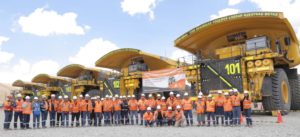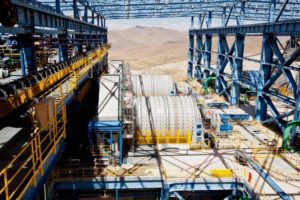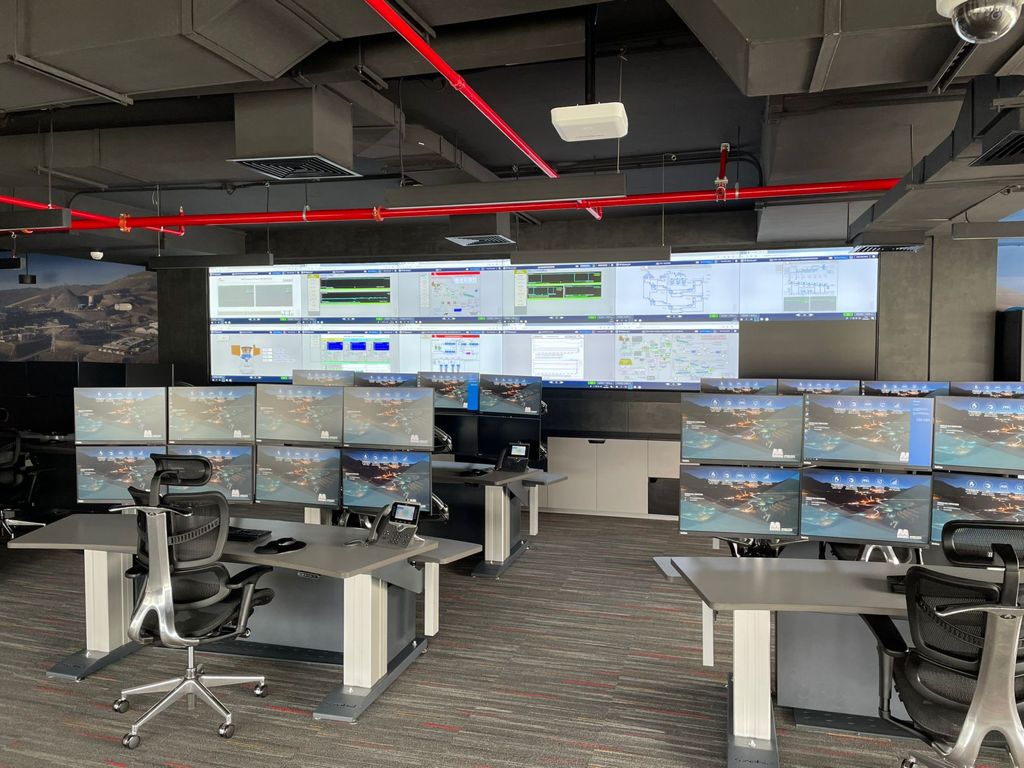Back in 2019, Nokia and Telefónica Peru signed a contract with MMG’s Minera Las Bambas to enable digitalisation and automation projects at its site in Cotabambas, Apurimac region, including deploying a private 4G LTE network which was duly commissioned in July 2020, the first in Peru. MMG said: “The installation of the private LTE network has increased the capacity to transmit data and improved coverage, allowing sensors and devices that were previously isolated and required physical presence to take readings to be connected securely and automatically.”
It added: “This has meant that sensors and equipment are able to be located throughout the operation and data can be measured in real time. Further, this innovation will also allow Las Bambas the possibility of implementing other advances in technology in the future, such as augmented reality, digital twins, Industrial internet of things (IIoT) and increased mobility, among others.”

With that infrastructure in place how has the mine been progressing with its future mining journey in equipment automony terms? The company has stated it wants to minimise the numbers of workers onsite as much as possible. MMG told IM that it has now started an assessment phase to understand if there is a potential business case at Las Bambas for the application of autonomous trucks, focussed mainly on new pits such as Chalcobamba, which is set for final permitting and commencement of mining this year.
The current fleet at the Ferrobamba pit now includes 15 Komatsu 980E trucks and 44 Komatsu 930E-4SE models along with 15 Caterpillar 797F machines so it has depth of experience in both electric and mechanical drive. These are loaded by five rope shovels (two Cat 7495 and three Komatsu P&H 4100) plus a Komatsu L-2350 large wheel loader and three Cat 6060 hydraulic excavators.

Currently, Las Bambas operates the Ferrobamba pit (stages 2, 3, 4). The current plan for Las Bambas includes the development of Ferrobamba (stages 5, 6, 7 and 8), the Chalcobamba and Sulfobamba deposits. The ore is crushed and transported on a 5.5 km overland conveyor to a conventional flotation plant where copper concentrate is produced, then to a molybdenum plant for further processing. Concentrate is then transported by truck and rail to the Port of Matarani in the Arequipa region, where it is shipped to customers worldwide.
Blasthole drill automation has progressed at the current Ferrobamba pit. Maggie Qin, Head of Corporate Affairs told IM: “We are doing a PoC on remote drilling with Epiroc, with the plan to transition to full automation. For remote control we have built a DOC (Digital Operation Centre) Phase 1 in Lima, more than 1,000 km from the operation, and we have already implemented three operator roles working from the DOC, we are introducing three more so we will have six operational roles working 24/7 from Lima.”
Las Bambas produced 311,020 t of copper in concentrate in 2020, an estimated 70,000 t shortfall due to COVID-19 workforce challenges and unplanned site maintenance. Las Bambas’ annual copper production is anticipated to increase to an average of 400,000 t over the period 2022 to 2025. In its 2020 report, MMG states: “The Las Bambas tenements are highly prospective in nature, as demonstrated by positive early drilling results at the Chalcobamba Southwest Zone which are expectedto drive expansion of the Chalcobamba pit design. Other greenfield exploration targets in the area are being pursued this year.
Key 2021 expenditures include Chalcobamba development at $70 million (including new crusher and conveyor), tailings dam phase IV and V ~$50 million, mining fleet additions $30 million, a third ball mill project at $32 million and Ferrobamba stage 5 infrastructure ~$26 million. The current reserves allow for a production of up to ~2040. This will require an ongoing development of new pits and infrastructure.












